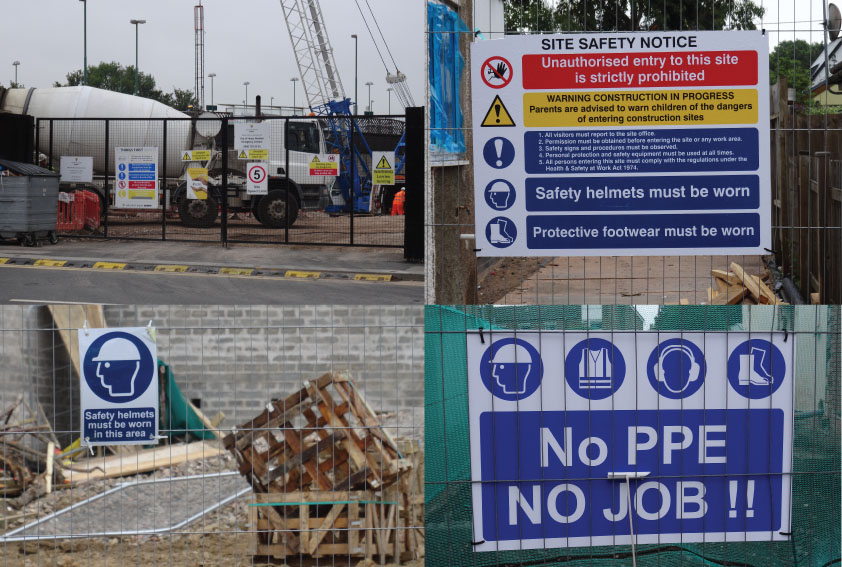
As working environments go, construction sites are among the most dangerous. Workers are regularly exposed to all sorts of hazards, ranging from electrical risks to falling debris. That’s why warning signs for a construction site are crucial to legal compliance and employee safety.
In this guide, we cover what signs are required on a construction site and best practices when it comes to displaying these.
The Importance of Warning Signs for Construction Sites
The purpose of construction safety signage is twofold – to provide instructions on safe behaviour and warn workers and visitors alike about potential risks.
Installing clear signage is an effective way to reduce their exposure to dangers and cut down on accidents – be those minor injuries or fatalities.
Construction Site Signage Requirements UK
In the UK, the Health and Safety (Safety Signs and Signals) Regulations 1996 state that safety signs must be used to highlight any significant risks which have not been mitigated in alternative ways.
What the mandatory signs for construction sites are will vary depending on individual projects and hazards, but there are several categories every contractor should cover.
Mandatory Signs for Construction Sites
These types of construction safety signs provide guidance on actions workers are required to take when on the premises. Traditionally, these signs are blue with a white image and are legally required in spaces where Personal Protective Equipment (PPE) is a must, for instance.
“Safety Helmets Must Be Worn” is an essential for almost every construction site. You can never have too many reminders that head protection is a must. Similarly, if your site is especially dusty or workers are at risk of flying particles, “Eye Protection Must Be Worn” is another must-have.
“High Visibility Clothing Must Be Worn” is especially useful around moving machinery and/or vehicles. This ensures your workers are easy to spot in low light or busy traffic areas.
Warning Signs for Construction Sites
Another key category is the construction warning signs. These are normally yellow triangle signs used to indicate a high-risk area (fragile roof, moving vehicles, etc), warn employees and visitors about specific hazards (men working overhead or incomplete scaffolding), or signpost restricted access ("Restricted area keep out").
If there are highly flammable materials or other hazardous chemicals on your construction site, more generic prohibition signs such as "No Smoking" could also be relevant as an additional warning.
Safety Instruction Signage
Recognisable by their green colour and white lettering, safe condition signs normally indicate the location of features such as safety equipment or emergency exits.
For instance, you should look to signpost the location of your first aid station and direct people to the fire exit if you’re working indoors.
Understanding Site Safety Signs Meanings
Often, it’s not enough to have the correct safety signage – you also must ensure your staff have a solid understanding of site safety sign meanings. Schedule regular training to run over essential signs, why they’re important, and the proper procedures in case of an accident.
Warning Signs for Construction Sites from Label Source
While the exact set of warning signs for a construction site that you require will depend on the specifics of your operation, you’ll likely need a mix of mandatory PPE signage, hazard-specific warnings, and instructions limiting unsafe behaviour.
Whether you’re looking for one combined building site safety notice sign or want to pick and choose the individual elements, our range of construction site signs covers all bases.
Not sure what exactly you need? Get in touch, and we’ll help with your checklist.